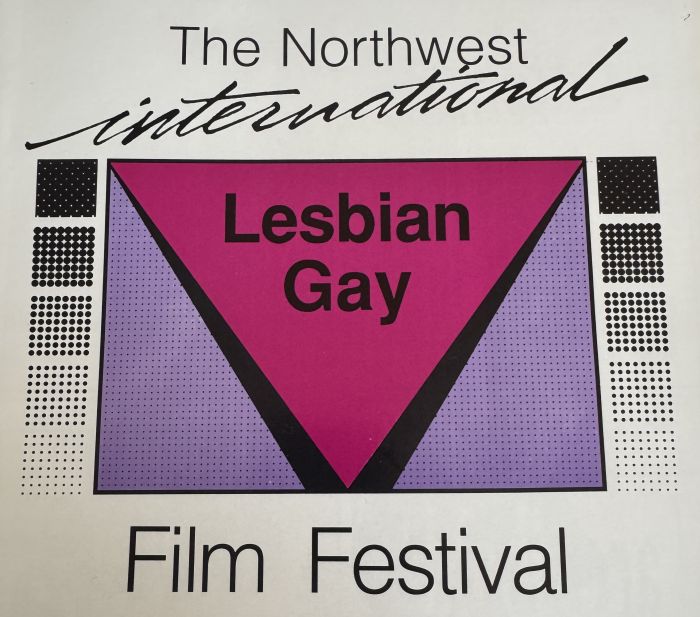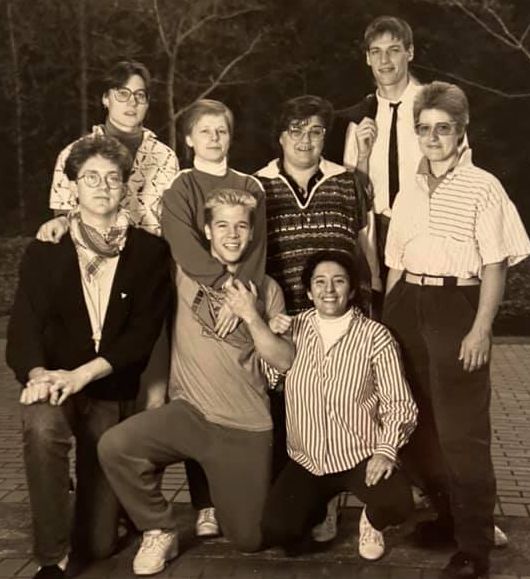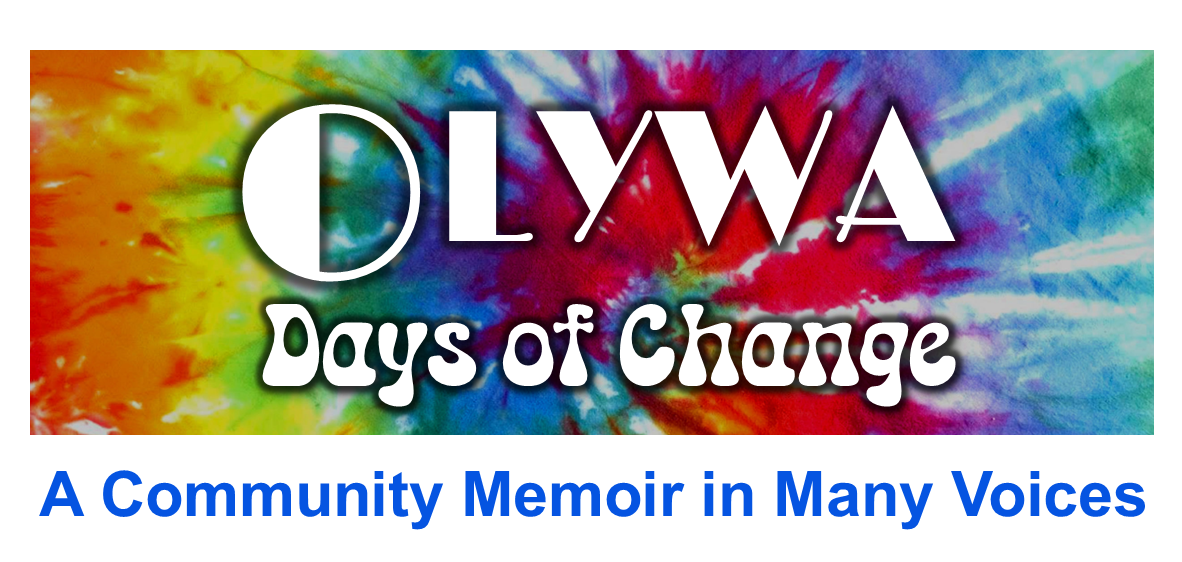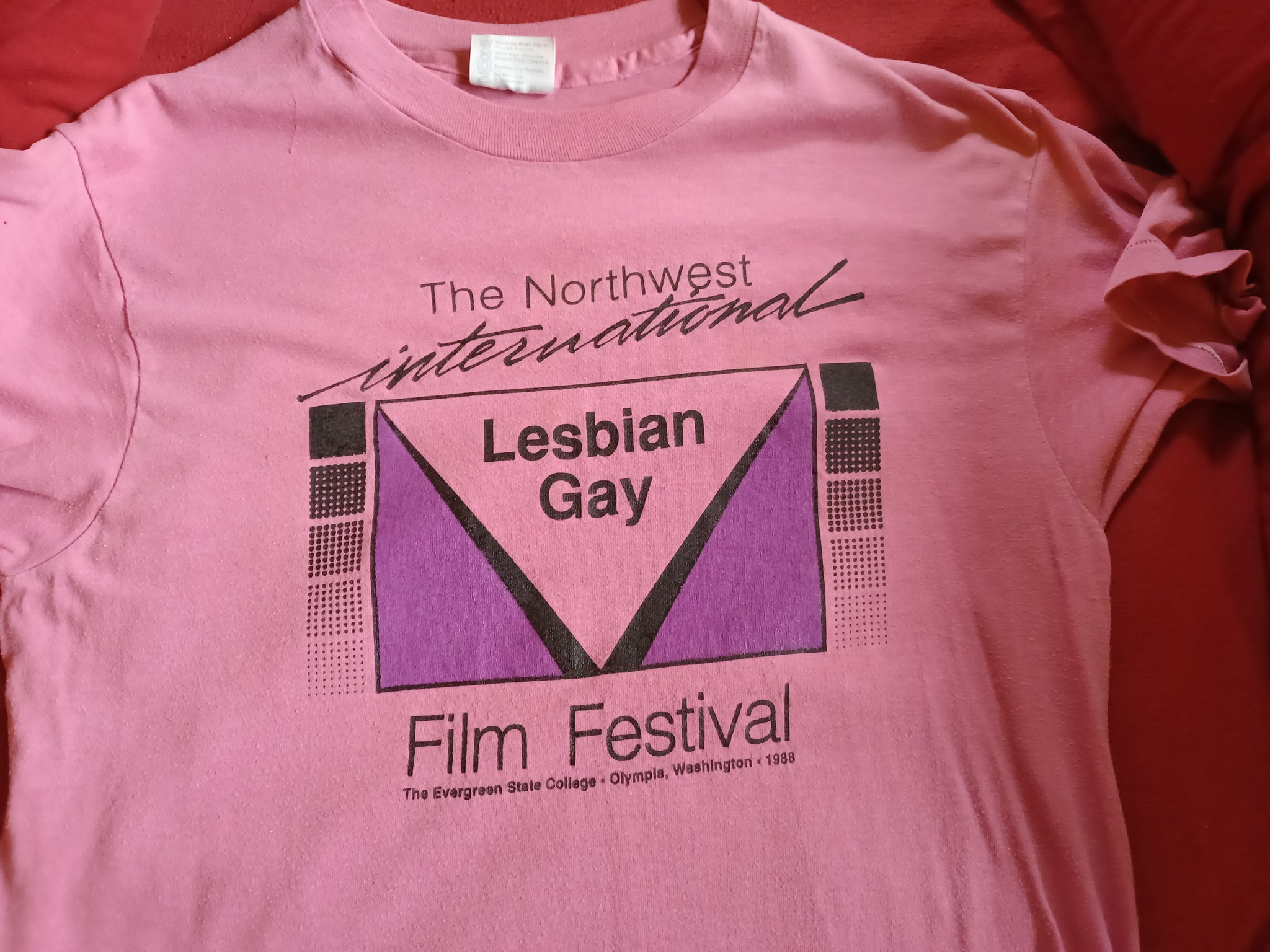ARTS
Northwest International Lesbian Gay Film Festival – 1988
By Helen Thornton

Marge Brown and I started brainstorming the first NW International Lesbian Gay Film Festival in 1985. Planning began in 1986, a year and a half before the first festival opening date of 1988. Marge was an Evergreen faculty member in media production and animation. We’d been together since the late ’70s and shared a love of films and filmmaking. She and I went to the San Francisco lesbian gay film festival every June to preview films.
In the mid to late ’80s the country was reeling from the AIDS epidemic. The year 1988 marked the first National Coming Out Day on October 11. A few cities in the US, including Olympia, had passed antidiscrimination laws to protect gays and lesbians. ACT UP, the emerging AIDS activist group, continued to put pressure on the Centers for Disease Control to do more about AIDS.
In this atmosphere, I made one of the first calls to a Chicago film distributor to book a film for our festival. The guy on the phone said he had lived in Olympia some years before, as he had been a student at Evergreen. He laughed as he wondered if there were any gay people in Olympia. I have to admit I was a bit insulted. I answered yes indeed there were gay folks in our town. Trying to bolster my response, I mentioned we were advertising in Seattle, Tacoma, Portland, Spokane, and Vancouver, BC. There was no lesbian gay film fest in any city in Washington state or Oregon. New York City had their first film festival in 1988, the same year Olympia also had our first.
I continued to book short and feature-length films, making calls all over the country and to other cities around the world. Faxing had just become more widespread, which made it a tiny bit easier when trying to reach a country where English was not the spoken language. Often, when I made calls, I had to try to get someone at the distributor who spoke English to talk with me. During one booking call to a Berlin distributor, I got a friend who spoke German to make the call with me.
We were also trying to figure out housing and childcare for the potential audience. There were lots of logistics to figure out, including the difficulty of getting gay films into the US in the ’80s and ’90s. They were often tagged as pornography by customs. At least one film was quite the struggle to get US customs to release to us. It felt like we were living in the puritanical Victorian era.

We were all volunteers. Our core steering collective met once a week for a year. We recruited more volunteers to do ad sales and logo designs. We laid out the program ourselves. Seeing this first printed program was so exciting.
When we opened the first three-day film festival in late April of 1988, we had huge crowds. We were psyched. People came from all over Washington, Oregon, and British Columbia. As a side note, one of the local evangelical churches protested against us; and it was in response to our film festival that the notorious Hamilton billboard near Centralia displayed the message that Evergreen was the “home of homos.”
Over the ten years that the core group did the film festival, we also brought filmmakers to present their work. These artists included Vito Russo, one of the founders of the radical AIDS activist organization ACT UP. Vito had written a seminal book called The Celluloid Closet. This great book explored the history of how LGBT people were depicted in film. A feature-length film, based on Vito’s book, was narrated by Lily Tomlin. Sadly, Vito died of AIDS seven months after his presentation at the festival.
Other filmmakers included Marlon Riggs, presenting his talk Ruminations of a Snap Queen and his fourth film, Color Adjustment. His films examined past and present representations of race and sexuality. We also brought British artist Pratibha Partmar to present her thoughts on a number of her films, including Kush, Sari Red, A Place of Rage, and Double the Trouble/Twice the Fun. Her film Kush examined the world of South Asian lesbians and gays in the United Kingdom and India. Andrea Weiss did a wonderful talk titled A Queer Feeling When I Look at You: Hollywood Stars and Lesbian Spectatorship. Weiss had made the Emmy award-winning film Before Stonewall: The Making of a Gay and Lesbian Community.
Filmmaker Cheryl Dunye did a retrospective of her film and video works, including The Watermelon Woman about a 1940s Black actress. At one festival we presented An Evening With Barbara Hammer, an experimental shorts filmmaker. Hammer was an early groundbreaking lesbian avant garde filmmaker. In a subsequent festival we brought artist Arthur Dong, who made the film Coming Out Under Fire, which profiled nine soldiers who were dishonorably discharged for being gay. These folks fought for their rightful benefits, which they were denied when they were kicked out. In a fictional drama called Devotion, filmmaker Mindy Kaplan explored a ghost from her past which challenged her relationship with her long-term love.
During each film festival, we threw a dance on the Saturday night of the festival weekend. A number of times we brought live bands like Rumors of the Big Wave, and a few times we had the festival dance at Thekla, the LGBT-friendly dance club in downtown Olympia.
Parents were so thrilled we provided licensed childcare at the festival site and we also provided housing in the homes of local folks for festival goers who could not afford a motel. This latter service took an amazing amount of coordination.
It was a heady time to be able to see new gay, lesbian, bisexual, and trans films with a queer audience in the late ’80s through the ’90s. Throughout the years, festival goers expressed much appreciation for this wonderful coming together of our community. This made the tremendous amount of work that went into each of the ten years of the festival well worth the effort.
We encourage readers to contact us with comments and corrections. Disclaimer

